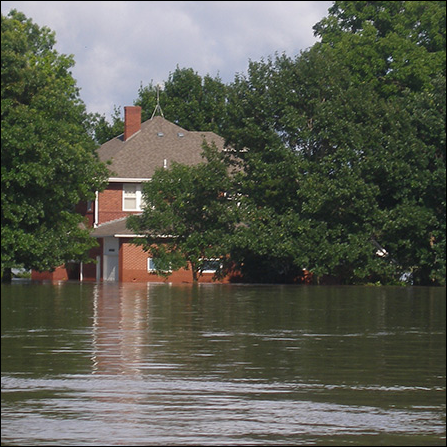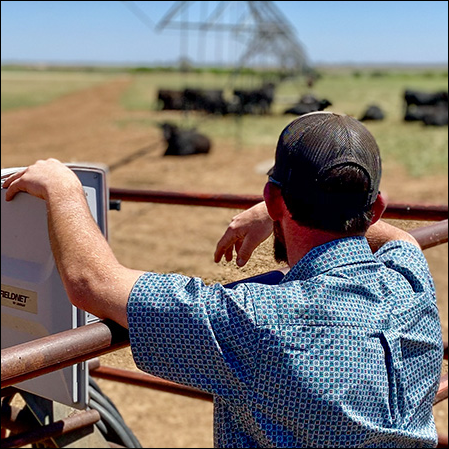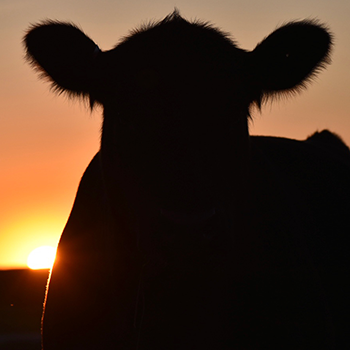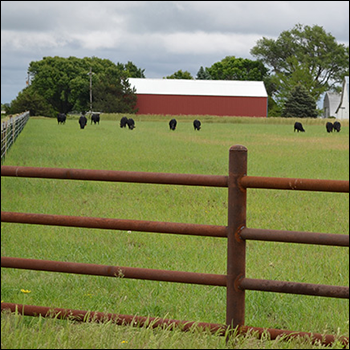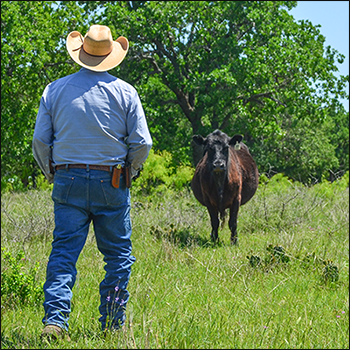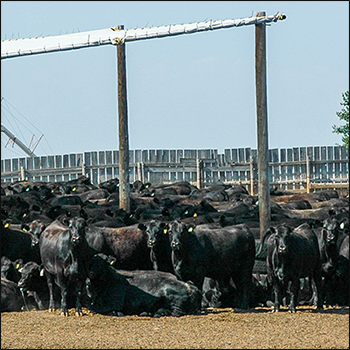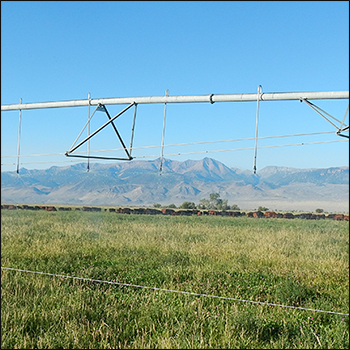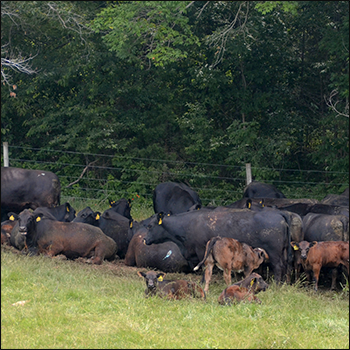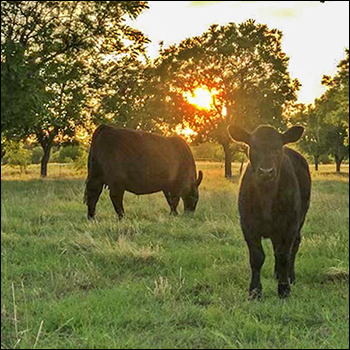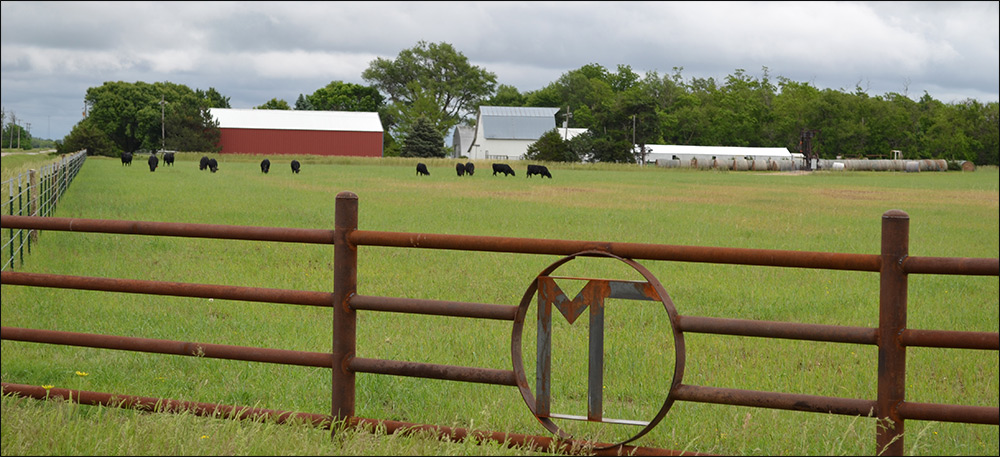
Range Recordkeeping
A practical approach offered to range recordkeeping.
The best businesses are the ones that are properly managed in ways that result in profit. However, if you’re a livestock producer, this is probably where you’re thinking, “easier said than done.” At the core, though, livestock production is no different than any other business out there. Effective management requires good metrics. Metrics come from measurements.
This sentiment is embodied by a quote by the late “father of modern business management” Peter Drucker, who said, “You can’t manage what you can’t measure.”
You probably have measurements — or metrics — of your operation with respect to livestock production records. Knowing which cows are most fertile, productive and therefore profitable, can inform decisions about culling and perhaps replacements for the breeding herd. Likewise, there are abundant measurements to use for bull selection, in the form of expected progeny differences (EPDs), and you likely keep track of how that bull performed in your cow herd. Having this information allows you to evaluate past decisions and plan the genetic progress and performance of your herd.
However, what records do you keep for your pastures? Having pasture records is just as valuable as those records you keep on your herd. Records help evaluate your rangeland management each year and guide plans for the next grazing season. Evaluating pasture production status is challenging, because landscape change is generally very slow. It can be nearly imperceptible to even the most careful observer. Knowing that grasslands are recovering or moving to a more productive condition requires a commitment to careful and repeated observation.
Fortunately, most of those observations are easily made. The challenge is making them on a regular basis and recording them. Think of it this way: If you took a “selfie” yesterday, would you look that different today? No, but if you compared that picture from today to a picture from last year or two years ago, you would notice changes. Likewise, comparing today’s picture to your baby picture would show tremendous growth and change over time.
Keeping range records is one of the easiest things you can do to increase the resiliency of your operation to changing weather and climate. For example, records can help you recognize you’re low on grass and need to sell a few cows. Or, it may help you capitalize on a really wet year by custom-grazing yearlings to put extra cash in the bank.
What records should you keep?
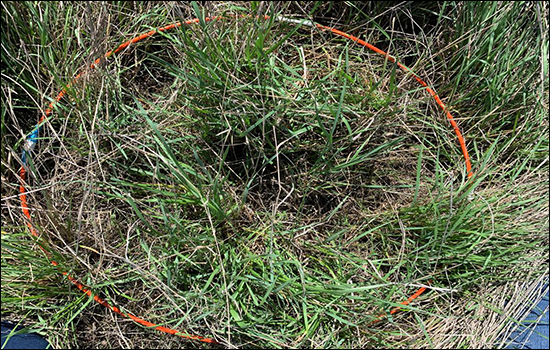
Records help evaluate your rangeland management each year and guide plans for the next grazing season. Evaluating pasture production status is challenging, because landscape change is generally very slow. It can be nearly imperceptible to even the most careful observer. Knowing that grasslands are recovering or moving to a more productive condition requires a commitment to careful and repeated observation. |
Weather data
Since moisture is so critical to grazing land condition in arid and semiarid regions, good records of precipitation are a necessity. Temperatures (daily highs and lows) are useful in understanding plant growth and production. Late spring freezes delay and reduce growth. Early fall frost ends growth and limits production. Cool summer temperatures can boost cool-season grass growth, but limit growth of warm-season grasses. Accessing historical records from a nearby weather station may provide guidance about “average” expectations for rainfall, but records taken on the ranch provide much better guidance about current year growing conditions and information to guide immediate grazing decisions. Precipitation and temperature can vary dramatically over very small distances. It is not at all unusual for a rainstorm that drenched your neighbor’s pastures to totally miss yours. Rain gauges and thermometers are inexpensive. Many require little maintenance and can record or store information for several days.
Grazing dates and stocking rates
When did you turn livestock onto each pasture? How long did they stay there? How many animals, which species (cattle, sheep), what class (cows, steers, ewes, etc.), and how much did they weigh? These records, especially when recorded over several years, can help explain changes in your pasture vegetation … and provide information to guide modifications. Without good, consistent records, you will find it difficult to remember exactly what happened in that pasture, and it will be harder to make changes to your management strategies. Keeping these pasture records in a pocket notebook in the same manner as calving records can be a valuable habit.
Pasture production and utilization
Determining the current year’s production and utilization doesn’t require a college degree or a lot of training. A couple of inexpensive tools and a little time will yield lots of useful information. A small hoop, a pair of clippers, a paper bag and a small hanging scale are all you need to estimate production. Toss the hoop into the pasture, clip to the ground all the vegetation rooted in the hoop and put it in the bag, and then weigh the bag on the scale. Repeat a few more times in the pasture.
The idea here is to make sure you are getting a representative sample of what’s in your pasture. Going back to the picture example, “a picture is worth a thousand words” is true, but several pictures will provide you with more details. Thus, don’t take just one sample. Drive your ATV or ride your horse around and take several samples across your pasture.
We recommend a 0.96 square foot (sq. ft.) hoop and a scale that weighs in grams. Extension or Natural Resources Conservation Service (NRCS) can help you get or make a hoop. Zero the scale for the empty bag weight; the weight of your clippings multiplied by 100 gives you pounds (lb.) per acre of wet forage if you use the 0.96 sq. ft. hoop. You can record the wet weight or translate it to dry weight (NRCS has some handy tables to make that easy). What is important is that you do it the same way every year at about the same time. If you end up doing it slightly different than your neighbor, that’s okay. Consistency is the name of the game here. Utilization records can be as simple as recording a comment about the level of use when stock are removed. More accurate estimates can be obtained by clipping inside and outside of grazing exclosures using your hoop.
Monitoring
“Monitoring” might sound like an academic, ivory tower word for an intimidating task that you don’t have time to do or feel like you don’t have the degree to do correctly. Wrong! You don’t need to be a botanist, a range ecologist or any of the “-ists” to conduct monitoring, especially with the advent of the smartphone.
One of the most effective monitoring techniques uses a camera. Choose one or two spots in your pasture that you think are representative of the condition of that pasture. Mark the spot (GPS, fencepost, etc.) so you can find it each year. Take landscape photos from that spot; be sure to either date stamp the photo, put a whiteboard or cardboard sign in the picture that tells where and when the photo was taken, or you can “annotate” the photo on your phone with the date and location. It’s best if you can take your photos at about the same time each year. You can also take photos of a plot on the ground, using the hoop described above. Make sure you can find the same spot again for future photos.
Print the photos out and bring them with you the next year so that you can get the same view each time. You can look at the photos taken of the same landscape or plot over a series of years and detect changes that you might miss without the photographic record. One of the ranchers I work with has binders full of maps and photos from each since taking the operation over from the parents. Again, these records are extremely valuable on the range side of things, but they also provide a unique historical view of the ranch.
General impressions
Taking time to evaluate the effect of your grazing management on current and future rainfall effectiveness will provide the opportunity to continue what’s working and to modify what’s not. In the same manner that it is crucial to evaluate the condition of grazing animals (using tools like body condition score), it is critical to “read the landscape” and to consider the condition of the vegetation and the soil. That assessment begins with careful observation, asking questions such as:
- Are the most desirable plants vigorous and healthy? (The same question we ask ourselves about the calves.)
- Is the soil surface protected?
- Does litter decay indicate a healthy cycle?
- Is there an abundance of weeds?
- Are new plants emerging that you haven’t seen before?
The other important step is keeping a record of the observation so changes (hopefully indicating improvement) can be detected.
One reward of livestock production is the progress observed in important traits, such as yearling weight or pregnancy percentage. That progress is only evident if records documenting the changes are kept. Similarly, range recordkeeping helps detect and demonstrate landscape changes that have a direct effect on your ability to maintain or grow your herd.
Back to a quote by Drucker: “If you can’t measure it, you can’t improve it.” So, start observing and recording! Put weather, grazing dates and stocking rates, pasture production and utilization down on paper or in a spreadsheet if you’re so inclined, and take pictures of your pastures. Add them to all the pictures you have of your cows and bulls!
Editor’s note: Krista Ehlert is an assistant professor and state extension range specialist, and Pat Johnson is a professor emeritus. Lead photo by Austin Woodrow, 2020 NJAA/Angus Journal Photo Contest.
